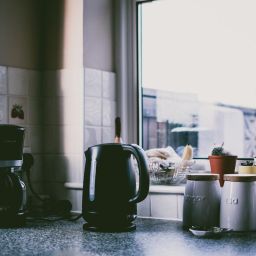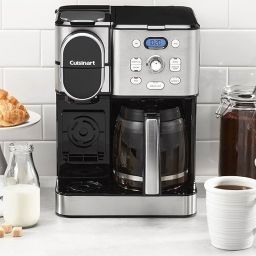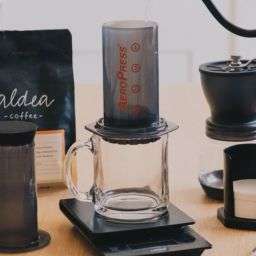
No, Keurig is not considered a traditional drip coffee maker. Keurig and traditional drip coffee makers both serve the main purpose of brewing coffee but utilize fundamentally different methods for doing so.
A traditional drip coffee maker brews coffee by dripping hot water over coffee grounds, allowing the water to seep through the grounds and a filter before collecting in a carafe. This process typically takes several minutes, during which the water extracts oils and flavors from the coffee grounds through a relatively slow filtration process.
On the other hand, Keurig machines use a different approach known as single-serve coffee brewing. Keurig machines use pre-packaged coffee pods called K-Cups. Each K-Cup contains coffee grounds, a paper filter, and is sealed to maintain freshness. When brewing, the machine punctures the sealed pod and passes hot water through it, brewing a single cup of coffee in just a few minutes. The water in a Keurig does not drip through the coffee grounds at a slow pace; instead, it is forced through quickly, which limits the extraction time.
Thus, while both machines brew coffee, their operational mechanics are different enough that Keurig cannot be categorized as a drip coffee maker. Keurig is better described as a pod-based, single-serve coffee maker.
Key Takeaways
- Differences in Brewing Methods: Keurig uses a fast, one-cup-at-a-time approach with K-Cups, whereas drip coffee makers process a batch of water through coffee grounds, suitable for multiple servings.
- Cost Comparison: Generally, drip coffee makers are more economical over time, both in terms of initial investment and cost per brew, especially when using bulk coffee grounds.
- Flavor and Quality of Coffee: Drip coffee often wins on the flavor front, offering a richness that comes from a slower extraction process, though Keurig provides consistent and convenient results with various flavor options.
- Environmental Impact: Keurig’s convenience comes with a cost to the environment due to single-use K-Cups, although there are reusable options. Drip makers might use disposable paper filters but are seen as less wasteful.
- FAQs and Final Thoughts: We’ll answer common questions about using both types of coffee makers and sum up the main considerations to help you choose the right one for your needs.
Brewing Methods: Keurig vs. Drip Coffee
When deciding between Keurig and traditional drip coffee makers, the differences in their brewing methods are a good place to start. Keurig machines utilize a unique system that involves K-Cups—small pods containing pre-measured coffee grounds, sealed for freshness. These pods are placed in the machine, which then punctures them and sends hot water through at high speed, brewing a single cup in just minutes.
In contrast, drip coffee makers work by slowly pouring hot water over coffee grounds that sit in a filter. The water extracts the coffee flavors as it seeps through the grounds and filter, then drips into a carafe below. This method can take several minutes, especially if brewing a full pot, but it allows for more contact time between the water and coffee, which can enhance flavor extraction.
The primary advantage of Keurig machines is speed and convenience. They heat up quickly and can deliver a cup of coffee in about a minute, which is ideal for those needing a quick caffeine fix. However, traditional drip brewers appeal to those who may appreciate the ritual of making coffee and the richer flavor that can come from the longer brewing process.
Cost Analysis: Initial and Ongoing Expenses
Evaluating the costs associated with Keurig and drip coffee makers involves looking at both initial investment and ongoing expenses. Generally, Keurig machines are more expensive upfront than basic drip coffee makers. While you can find a simple drip brewer for under $30, even the most basic Keurig model usually starts at around $60.
Ongoing costs also tend to be higher for Keurig users due to the price of K-Cups. These convenient pods cost more per cup compared to buying bulk coffee grounds or beans used in drip machines. For example, a typical K-Cup might cost around $0.50 to $0.75, whereas a comparable amount of ground coffee could be as low as $0.15 to $0.25 per cup, depending on the coffee’s brand and quality.
Maintenance costs should also be considered. Keurig machines need regular descaling and potentially more frequent repairs due to their mechanical complexity. Drip brewers, while requiring regular cleaning and occasional descaling, generally have fewer parts that can malfunction.
Flavor and Quality of Coffee Produced
The flavor and quality of coffee from Keurig and drip coffee makers are influenced significantly by the freshness of coffee and the brewing time. Drip coffee makers typically use freshly ground coffee beans, which can offer a more robust flavor profile due to the oils and aromas that are preserved in freshly ground beans. The slower brewing process of drip coffee, which involves water slowly passing through the coffee grounds, also allows for a more thorough extraction of flavors. This can result in a richer and more complex cup of coffee.
On the other hand, Keurig machines use pre-packaged K-Cups, which contain coffee that has been ground, measured, and sealed. While K-Cups offer convenience and consistency, they may not always capture the full flavor potential of the beans compared to freshly ground coffee. The quick brewing process of Keurig machines, designed for speed and convenience, typically does not allow the same depth of flavor extraction. However, for many users, the trade-off for quick and convenient coffee at the press of a button is worth it.
Environmental Impact and Sustainability
The environmental impact of coffee brewing methods, particularly the waste produced by K-Cups versus traditional coffee filters, is a significant concern. Keurig’s single-use K-Cups are often criticized for contributing to landfill waste, although they provide unparalleled convenience. In response to environmental concerns, there are now more options for recyclable K-Cups and reusable coffee pods that allow users to fill them with their own coffee, reducing waste.
Traditional drip coffee makers typically use either paper filters, which are biodegradable and compostable, or metal filters, which are reusable and produce no waste. The choice of filter can impact the environmental footprint of your coffee habit, with reusable options being the most eco-friendly.
FAQs
Can I use my own coffee grounds in a Keurig? Yes, you can use your own coffee grounds in a Keurig by using a reusable K-Cup filter. These filters allow you to fill them with your choice of coffee, offering more flexibility and potentially reducing costs and waste.
How does the cost of Keurig compare to drip coffee makers over time? Initially, Keurig machines may be more expensive than drip coffee makers. Over time, the cost of K-Cups can make Keurig more costly to operate compared to using bulk coffee grounds with a drip coffee maker. However, the exact cost can vary based on coffee consumption patterns and the type of coffee purchased.
What is the environmental impact of using a Keurig versus a drip coffee maker? The environmental impact of using a Keurig generally involves higher waste due to the use of single-use K-Cups, which are often not biodegradable. Drip coffee makers typically use paper filters, which are compostable, or metal filters, which are reusable. However, efforts are being made to produce recyclable and compostable K-Cups to reduce environmental impact.
Final Thoughts
When deciding between Keurig and drip coffee makers, consider what factors are most important to you. Convenience is a significant advantage of Keurig machines, allowing for quick, consistent coffee with minimal effort. Cost effectiveness over time favors drip coffee makers, especially for those who drink multiple cups per day or prefer the economy of bulk coffee grounds.
Flavor and quality of coffee can vary; drip coffee makers often provide a richer flavor due to better extraction processes, whereas Keurig offers convenience with a decent, consistent taste. Lastly, the environmental impact leans in favor of drip coffee makers due to less waste produced compared to traditional K-Cup usage, though Keurig is making strides in offering more eco-friendly options.








